There are many Christmas traditions in our country. We have the Advent calendar, the pig's trotter, the sausage, the holly, the mistletoe, the stump and the Christmas flower. There is also the Christmas tree and the nativity scene, Father Christmas and the Befana, and how can we not mention among the customs the exchange of gifts and the sending of greeting cards to relatives and friends.
Gifts are an important aspect of celebrations in Christmas traditions. All over the world we have various mythical figures who bring them to children. In Italy, the best-known character is Babbo Natale (Father Christmas), but in the age of consumerism, adults also exchange gifts with each other. While for Epiphany, on 6 January, we have the Befana or St Nicholas.
Christmas is a Christian holiday, celebrated worldwide on 25 December, the day on which we symbolically honour the birth of Jesus. The main theme, as the word suggests, is the Christian Nativity and is one of the most important festivities in our beautiful country. In fact, Italy has countless Christmas traditions that, with small variations from region to region, are celebrated every year.
Today, we are going to look at precisely this set of symbols and practices linked to our country's Christmas traditions and, perhaps, you will come across some that you were not aware of.

Italian Christmas traditions
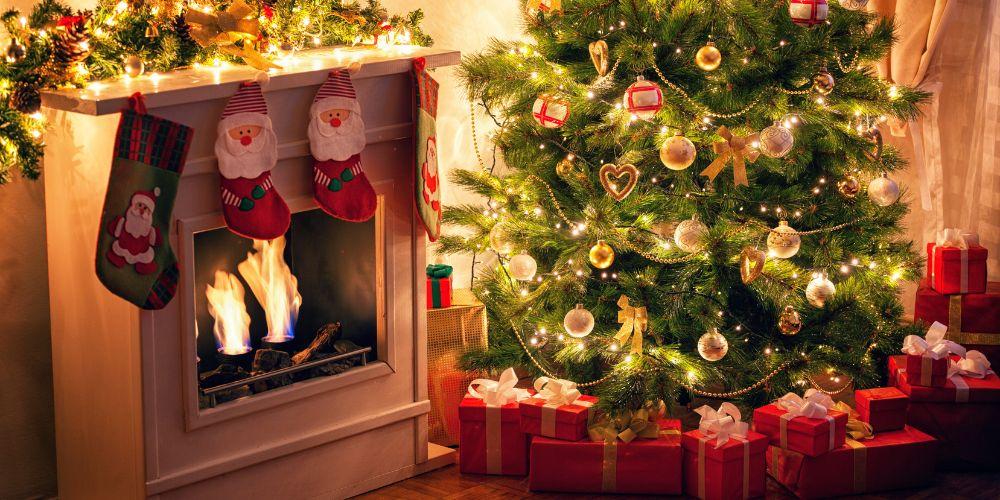
Ours is a country rich in Italian Christmas traditions, ranging from cooking to popular and religious rituals, each region has its own, handed down from generation to generation.
One of the Italian Christmas traditions is that the festivities begin on Immaculate Conception Day, 8 December. On this day, Italian families decorate the Christmas tree, set up the nativity scene and carpet the house with colourful lights.
Among the Italian Christmas traditions, we cannot fail to mention the pipers, who herald the arrival of the festivities with their typical melodies and songs in the squares and streets of our cities. Tradition has it that these players arrive from the mountains and are welcomed into homes, shops and churches to cheer the festivities and wish Merry Christmas.
Also, part of Italian Christmas traditions are two mythical figures, Father Christmas and the Befana. The custom of bringing gifts is not only reserved for these particular characters, but also develops through a mutual exchange of presents, both within the family and among friends.
At the Advent time, in South Tyrol, it is customary to organise the widespread and popular Christmas markets, as people prepare for the coming of Christ with the preparation of typical cakes and biscuits, the tree, the crib and decorations.
To learn more about these and other Christmas curiosities, continue reading our article on Italian Christmas traditions.
Special Christmas traditions: the feast of St Nicholas

In many European countries, the 6th of December, day of St Nicholas of Myra, is dedicated to gifts. In Germany, children place their slippers on door and window sills, hoping that St Nicholas will fill them with sweets and small presents.
In Italy, among the Christmas traditions, that of St Nicholas bringing gifts to children is not only celebrated in Friuli, in the Belluno area and in the towns to the left of the Piave River, but also throughout Trentino Alto Adige. On 6 December, Nikolaus, St Nicholas, accompanied by the fearsome Krampus, arrives throughout the province, bringing small gifts and sweets in the characteristic red bag, such as chocolate, mandarins and dried fruit, bonbons, Pfeffer or Lebkuchen.
As we said, St Nicholas is accompanied by a character called Knecht Ruprecht, in northern Europe, and Krampus, in Austria, Switzerland and South Tyrol, a kind of devil who kidnaps children.
In these countries, every Sunday of the festivities, there is the custom of lighting a candle on the typical Advent wreath, while every day, children await the arrival of Christmas by opening a little box on the 'Advent calendar', which starts on the 1st and ends on the 24th.
In addition, on the evening of 24 December, the Christkind, the baby Jesus, arrives in South Tyrol to bring gifts.
The Most Beautiful Italian Christmas Traditions: Father Christmas, the Befana, Santa Lucia
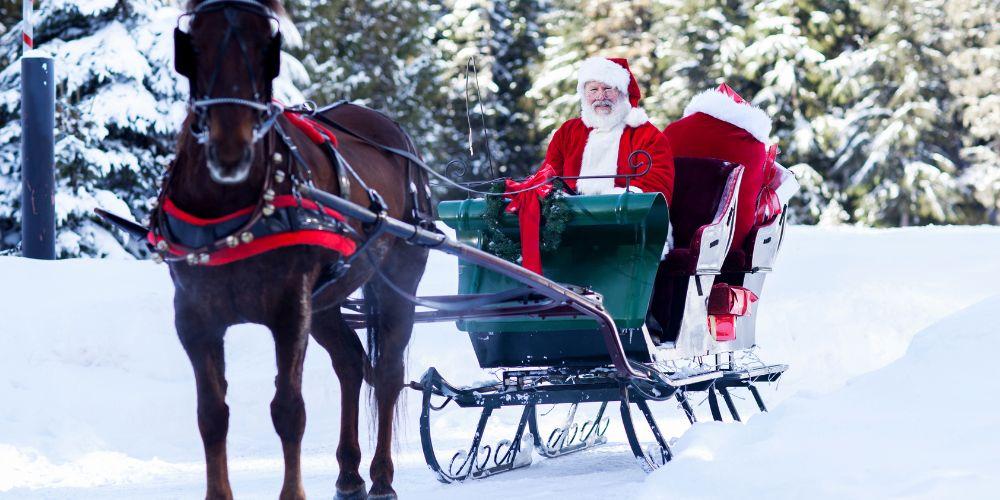
Santa Lucia from Syracuse also brings gifts to children in many northern Italian provinces on the night of 13 December. In addition, in Syracuse, the saint's hometown, she is solemnly celebrated with religious and folkloristic functions. Then on the night of 25 December there is traditionally Father Christmas.
In Trentino Alto Adige and northern European countries, the evening of Christmas Eve is the time when gifts are exchanged, and for children, Christkind arrives. In most Christmas traditions, it’s the Christ Child or Father Christmas who brings the gifts to the children on Christmas Eve.
Father Christmas, arrives on the night of 24 December flying on a magical sleigh pulled by reindeer. He enters in our homes by descending down the chimney, leaves the gifts under the tree and eats the biscuits and milk that the children have left for him. The rest of the year is spent making toys together with the elves in their toy workshop where they work and receiving letters about children's behaviour.
The feast doesn’t end with Christmas, but rather awaits the arrival of the Three Wise Men with the children going from house to house to announce the birth of Christ, disguised themselves as the Biblical Magi, asking for a small offering, and often, they are given sweets.
During the feast of Epiphany, in Spain and France, gifts are also brought by the Three Wise Men, priests and soothsayers of pagan religions.
In South Tyrol, the figure of the Befana, widespread in the neighbouring southern regions, is unknown to most people.
The Befana always arrives flying, but on a broomstick. Children hang a stocking over the fireplace, so that it can be filled with toys and sweets. For the feast of St Nicholas, they do the same thing, always on the evening before 6 December.
Perfectly describing the atmosphere and folklore behind England's Christmas traditions is the song Twelve Days of Christmas, the days from Christmas to Epiphany.
In other countries, Christmas gifts are brought on the night of 24 December or in the morning of the next day by Father Christmas. Until not so long ago, gifts were also brought on Boxing Day, 26 December, by friends and acquaintances.
Ancient Christmas traditions: the nativity scene
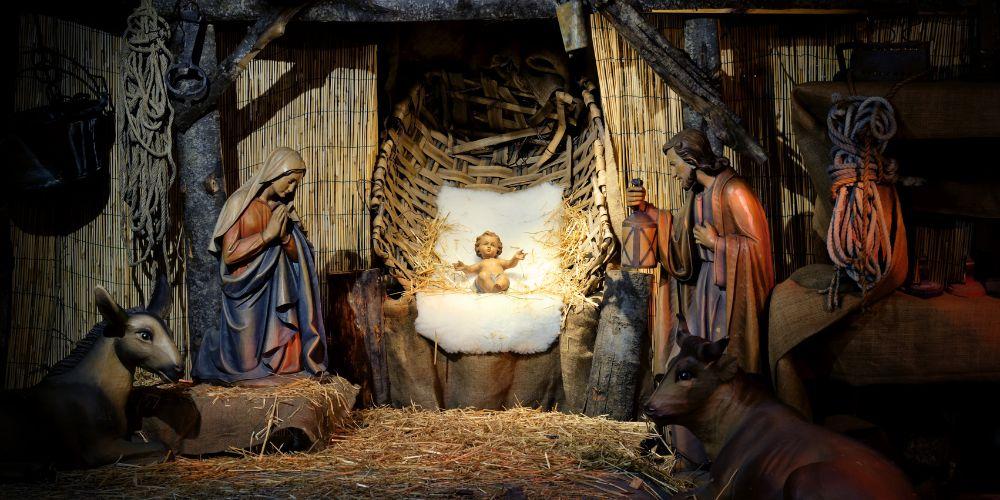
The nativity scene is one of the most widespread Christian Christmas traditions in our country, and is the scenic representation of the Nativity of the Child Jesus.
The first nativity scene was Italian and was commissioned by St Francis of Assisi, who in 1223 in Greccio asked a friend to place a manger, an ox and a donkey in a grotto, so that people could see with their own eyes admiring the situation and the place where Jesus was born.
In the 15th century, the nativity tradition took hold in Naples. In fact, San Gregorio Armeno street, which has become the symbolic street of this art, is full of artisan workshops that crowd every year with tourists and the curious to grab a handmade figurine.
Old-time Christmas traditions: Christmas decorations
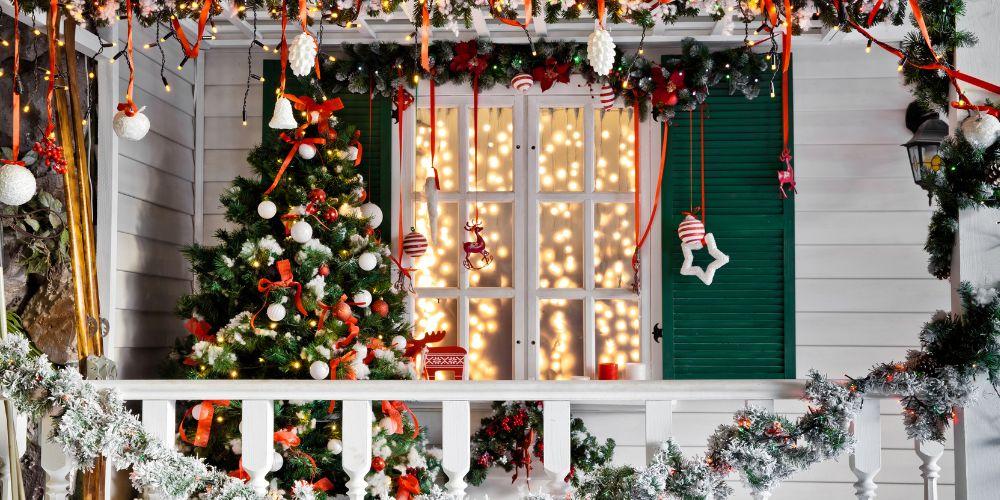
The decoration of a Christmas tree with Christmas decorations and lights, the application of garlands of evergreen leaves, special hollyhocks and mistletoe are those decorations that are part of Christmas traditions.
The use of holly was introduced by the Church; the leaves represent the crown of Christ and the berries symbolise the drops of blood coming from His head.
In America, it’s customary to decorate homes and gardens with lights, sleighs, puppets and other Christmas figures.
The Christmas flower par excellence is the poinsettia, the Christmas star. But also popular are the red amaryllis, holly and the Christmas cactus.
For the festive season, it is customary to set up decorations with lights and huge Christmas trees along the main streets and squares. Other typical decorations include bells, candles, candy canes, Christmas stockings, wreaths and angels.
One of the Christmas traditions is also the display of wreaths and candles in every window of our homes.
The typical colours of this period are red, green and gold. Red because it symbolises the blood of Jesus shed during his crucifixion. Green symbolises eternal life, like the evergreen tree that never loses its leaves. Gold, like one of the gifts the three Magi brought to the baby Jesus, symbolising royalty.
Christmas traditions of yesteryear: traditional cooking

A special family meal is an important part of Christmas traditions and the food served varies greatly from country to country.
Some regions, such as Sicily, offer special meals on Christmas Eve where 12 types of fish are served.
In the UK and Anglo-Saxon countries, the Christmas meal consists of turkey, goose or other large birds with gravy, potatoes, vegetables, bread and cider. In addition, special desserts such as mince pies and Christmas cake, log and pudding are prepared.
In Central Europe, the traditional Christmas meal is fried carp or other fish.
In France and other French-speaking countries, the Christmas log or Christmas chocolate, bûche de Noël, is typical as a dessert. Also known as Christmas log, it is shaped like a log with a jam filling, covered with coffee or chocolate cream and icing. The recipe was invented by a confectioner in 1945.
In Italy, one of the Christmas traditions is to spend the holidays with the family, so what better place to gather than at the table?
Even at this time of year, Italian cuisine never disappoint and each region has its own workhorse. Among the big stars are Christmas cakes, super delicious specialities that cover Italy from North to South. Examples of these are:
1. Christmas Zelten (Trentino Alto Adige): a dessert of Central European origin, made with dried fruit and candied ones, that is usually prepared during Advent;
2. Christmas trunk (Piedmont): a cake in the shape of a piece of wood. Originating in Scandinavia, it contains butter, mascarpone cheese, eggs, chestnut cream, cream and chocolate;
3. Pangiallo (Lazio): a sweet bread dating back to Imperial Rome, where it was customary to prepare it during the winter solstice, as a good omen for the return of long days;
4. Struffoli (Campania): a typical traditional Neapolitan Christmas cake of Greek origin. They are soft balls of sweet dough, fried in boiling oil (originally in lard), then dipped in honey and enriched with candied fruit and coloured sugared almonds.
5. Le Cartellate (Puglia): these are small rosettes of dough made with flour, eggs, sugar, oil, white wine, fried and then dipped in vincotto (fresh cooked grape must) or honey.
The eternal Italian dilemma: Panettone vs Pandoro
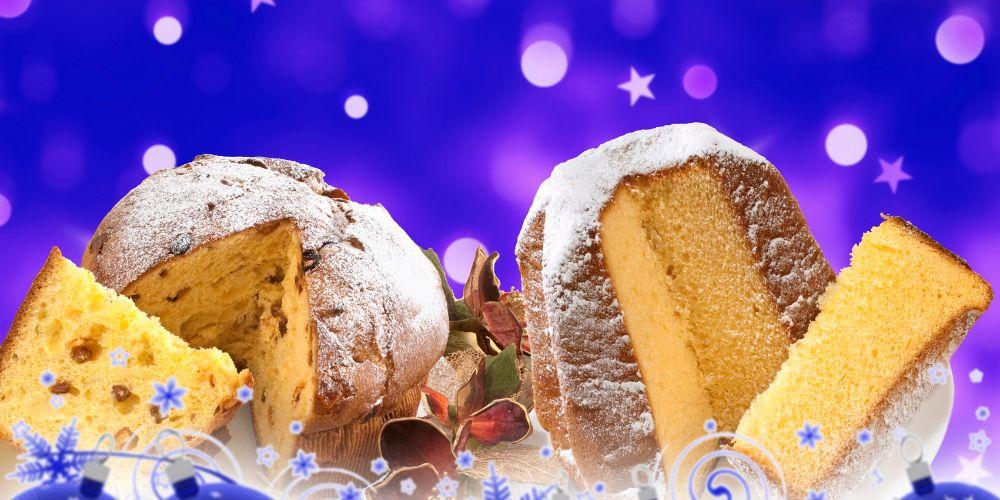
Among the sweets of Christmas traditions, a separate mention must be made of panettone and pandoro. Two Christmas sweets from Milan (panettone) and Verona (pandoro) respectively, but which are consumed throughout Italy.
Italian Christmas is split in two when it comes to these two sweets, because there are those who prefer one and those who prefer the other. There are those who love panettone, rich in sultanas and candied fruit, a symbol of abundance and happiness; and those who love pandoro, simple but rich in butter and eggs, with its unmistakable star shape.
But in addition to panettone, Lombardy's Christmas tables are filled with so much other goodies. And Verona's confectionery tradition goes beyond pandoro alone.
Christmas traditions of yesteryear: greeting cards
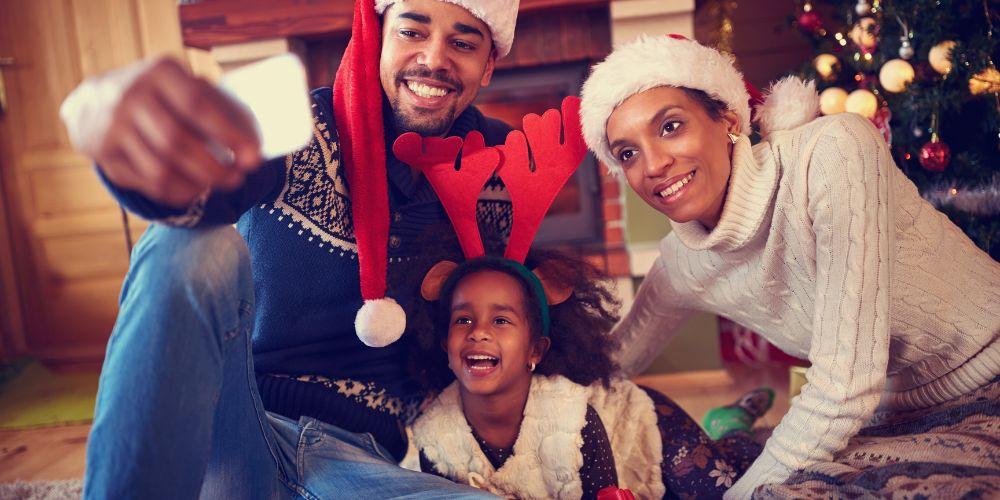
Greeting cards are among the most popular Christmas traditions in both Europe and the USA. In part, they are used to maintain relationships with distant relatives, friends and business acquaintances. Many families along with the cards send the famous family portrait where everyone is dressed alike with a strict Christmas-style dress code. But there are also other photos that always depict family members and stories about the events they experienced during the course of the year.
• Christmas traditions: let's go over the symbols and practices linked to this magical time of year.
• Italian Christmas traditions: every region has its own, they are handed down from generation to generation and range from cooking to popular and religious rituals.
• Particular Christmas traditions: the feast of St Nicholas. Nikolaus and the fearsome Krampus who bring gifts to South Tyrolean children.
• The most beautiful Italian Christmas traditions: Father Christmas, the Befana, Santa Lucia and all the bearers of festive gifts.
• Ancient Christmas traditions: the nativity scene. The most popular in Italy curiosities and where you can find handcrafted figurines.
• Old-time Christmas traditions: Christmas decorations. How they come into being and why the choice of colours.
• Christmas traditions of yesteryear: traditional cooking, typical sweets from Italy and other countries.
• The eternal Italian dilemma: Panettone vs Pandoro the choice is always hard.
• Christmas traditions of yesteryear: greeting cards. The customs that have accompanied us since time immemorial and the desire to catch up with distant relatives and friends.
About the author
Written on 28/11/2022


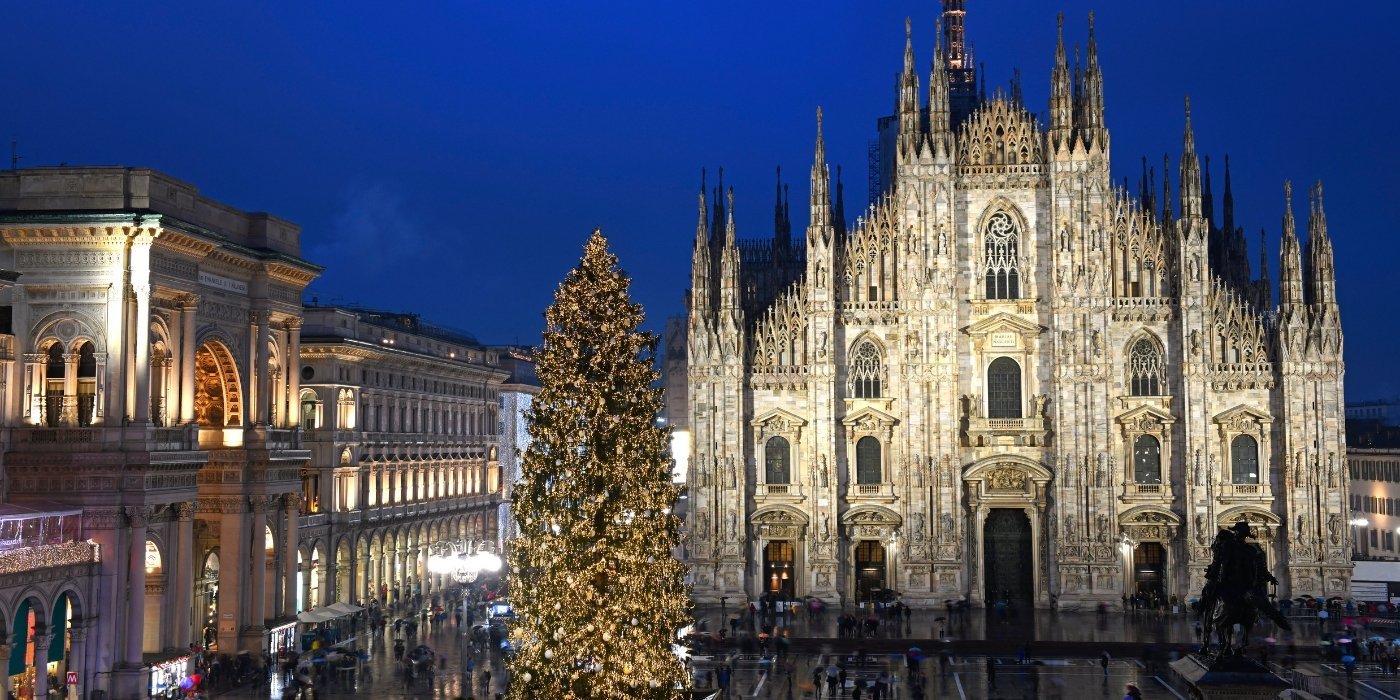
Simone Spolitu
Let's discover together what are Christmas traditions in Italy. Curiosities, typical sweets and who brings gifts at this wonderful time of year.